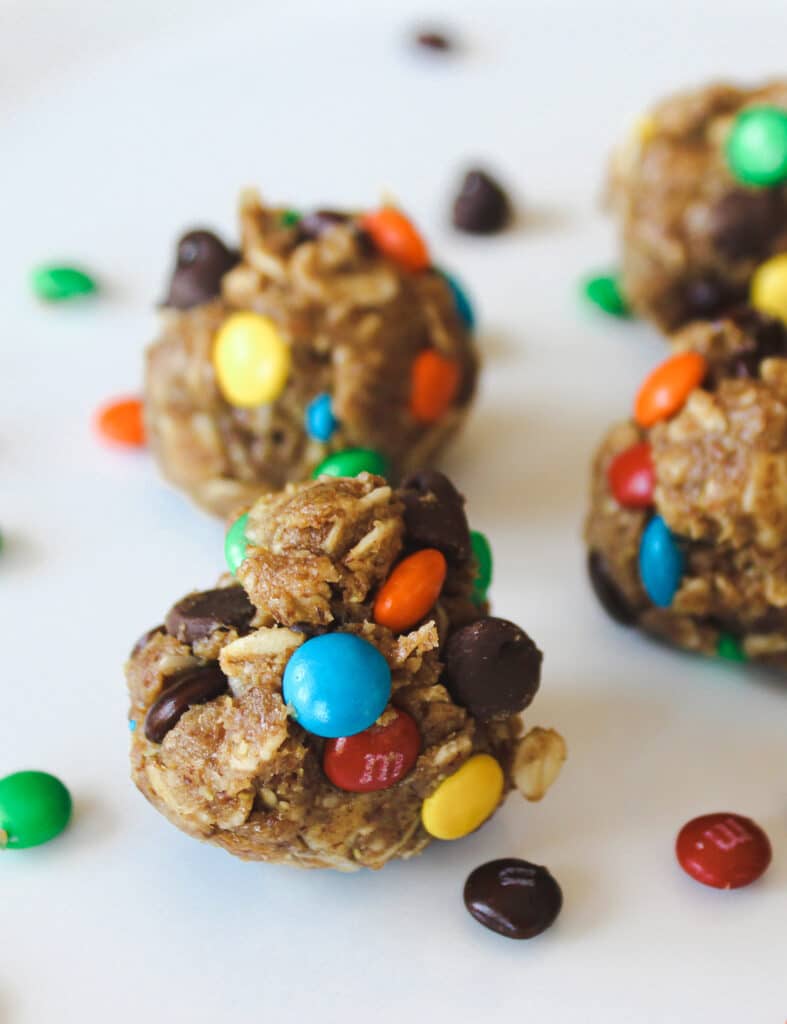As a registered dietitian and 8-time marathon runner, I often receive nutrition questions related to running. I want to share some tips about nutrition and how best to fuel as a distance runner. I am going to break it up into three posts:
- General healthy eating tips for distance runners
- Fueling properly pre-run, while running, and post-run
- Race day tips and carb-loading
This post is going to focus on general healthy eating tips for distance runners to help you be the best runner you can be. Whether you are new to running or have been running for decades, your nutrition plays a key role in performance and preventing injuries.

Fueling as a Distance Runner
Distance running has many advantages. Many new runners are surprised by how much their appetite increases while training for a distance event like a half or full marathon. Exact calorie needs are going to vary depending on age, gender, and calories burned. As a general rule of thumb, most people burn approximately 100 calories per mile run (though this is not entirely accurate).
Just how much will running increase your caloric needs? It really depends, but it is not necessary or recommended to track calories if you feel comfortable with your energy levels and are performing without feeling overly fatigued or sluggish during your runs and throughout the day. If you are someone who enjoys tracking calories, you can get an estimate of your caloric needs from a SmartWatch (ie Apple or Garmin). However, I highly recommend working with a registered dietitian (RD). An RD will help determine exactly what you need if you feel you need additional help.
Runners must also consume adequate carbohydrate and fat for energy but also protein for performance and muscle recovery. It is important to note that distance runners should limit fiber during the day before a long run or workout, especially when racing.
Signs of Underfueling
If you are losing weight, feel chronically tired, or are hungry constantly, these are all signs you are likely underfueling. For females, amenorrhea (aka lack of a menstrual period) is an immediate red flag of inadequate nutrition. Aside from hormonal disruptions, it can hinder performance and lead to increased risk of injuries in the short term. Poor bone health can also result in the long term.
Overall, a runner's diet should mirror a healthy eating pattern that is adequate in calories. It should also include a wide variety of nutritious foods. Running high mileage with large calorie expenditures does not give someone a "free pass" to eat a low quality diet.
Dietary Patterns to Achieve Your Best Health
When looking at consumption data from the 2020-2025 Dietary Guidelines of America (DGs), nearly 90% of the US population falls below the recommended intakes for vegetables. It is similar for fruit, with approximately 80% failing to meet the requirements. Meanwhile, the consumption of refined grains, added sugars, saturated fat, and sodium far exceed the recommendations set forth in the DGs. For a person consuming a 2,000 calorie diet, this is the recommended consumption pattern of food groups per day:
- Vegetables: 2-½ cup equivalent
- Fruit: 2 cup equivalent
- Grains: 6 ounces (at least 3 ounces coming from whole grain sources)
- Dairy: 3 cup equivalent
- Protein Foods: 5-½ ounces
- Oils: 27g (approximately 2 Tbsp)
- Limit on Calories for Other Foods: 240 calories

If you would like to see the full chart for other calorie amounts, I have linked the DGs here (see Table 4-1 on page 109). The main takeaway is to remember to fuel on on fruits, veggies, and whole grains daily, as these are food groups that most people consume too little of. As runners, these are primary sources of carbohydrates, which are the body's preferred energy source and contain an abundance of beneficial nutrients.
Healthy Snack Ideas
If you feel you are struggling to eat enough calories, especially from nutritious foods, here are a few of my favorite snack ideas! I like to recommend foods with carbs, protein, and/or fats to help give you an energy boost and keep you feeling satisfied:
- Whole grain toast with avocado
- Whole grain bagel with peanut butter and honey or banana
- Hardboiled eggs and a piece of fruit
- Trail mix with nuts and dried fruit
- Edamame
- Whole grain crackers with nut butter or cheese slices
- Greek yogurt or cottage cheese with fruit
- Fruit smoothies
- Veggies with hummus or dip of choice
- Canned beans
- Fresh or frozen fruit of choice
- Whole wheat protein waffles
- Granola or protein bars
- Oatmeal with fruit and/or nut butter
- Tuna or chicken salad with whole grain crackers or toast
- Chocolate milk or milk of choice (preferably with protein)
- Apple slices or banana with peanut butter
- Energy balls (recipes here-Trail Mix Energy Balls or Monster Cookie Energy Balls)

Convenience and food preferences play a role when selecting snacks, so try to find the options that work for you and that you actually enjoy!
If you have any questions, please leave a comment or connect via my socials which are linked here!
Be sure to check out some of my other great posts!





Leave a Reply